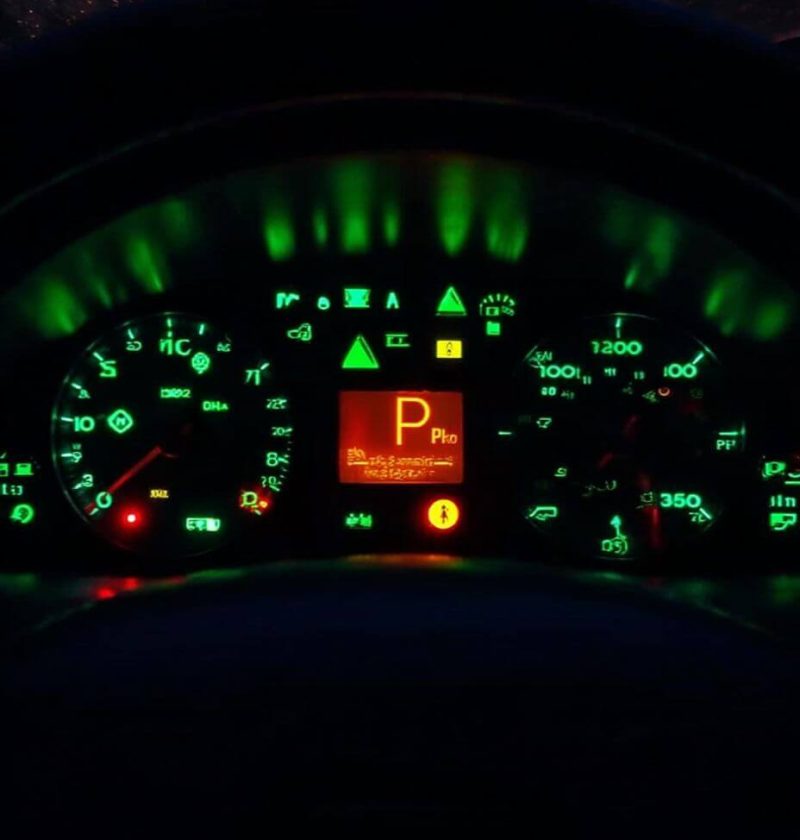Save This Recipe
A couple of weeks ago, I was driving back from my daughter’s place after a late dinner—tired, full, and just ready to slip into my slippers. That’s when I noticed a car behind me with green lights flashing from the dashboard area. Not the headlights. Not the underglow. Just… green. And let me tell you, I had no idea what that meant.
Was it some new techy thing? A fancy car mod? Or something official?
That little mystery stuck with me, and I did a bit of digging the next day over coffee. And wow—there’s a whole world of meaning behind those colored lights on vehicles. Most of us know red means “stop” and blue means “police,” but green? That’s where things get interesting.
Let’s break it down in plain English, shall we?
Why You’ll Love Knowing This (Seriously!)
Understanding those blinking and glowing lights on cars isn’t just for the car geeks. Here’s why it matters:
-
It helps you stay safe on the road (and avoid trouble).
-
You’ll know when to yield or pull over—even if the vehicle isn’t a traditional police cruiser.
-
Avoid getting fined for illegal car mods.
-
Because curiosity counts—it’s just plain interesting!
So… What Does a Green Light on a Car Mean?
Here’s the thing: if you’re seeing a green light on a car, it’s not your everyday commuter running errands.
Green lights are typically used by emergency personnel or government officials, depending on where you are in the U.S. More specifically:
-
Volunteer firefighters often use green lights to signal that they’re responding to a call.
-
First responders—like EMTs—may also use green dashboard or grille lights, especially in rural or small-town areas.
-
Security or patrol vehicles for government facilities might have steady green lights as part of their ID system.
And just like that mysterious car I saw that night, these folks are usually using personal vehicles with these lights, not firetrucks or ambulances.
Should You Pull Over for a Green Light?
That depends on where you are.
Some states treat green-light-equipped vehicles as emergency vehicles when they’re flashing—meaning you should yield just like you would for a fire truck. Others don’t have clear rules, but it’s always a good idea to slow down and give them space.
If someone’s racing toward an emergency to help save a life or stop a fire from spreading, the least we can do is let them pass safely.
Can You Add Green Lights to Your Vehicle?
Here’s where it gets tricky.
You might think green is harmless—it’s not red, it’s not blue. But in many states, adding green lights to your car (especially flashing or front-facing ones) is flat-out illegal. Why? Because it can:
-
Confuse other drivers
-
Be mistaken for an emergency vehicle
-
Interfere with traffic signals or safety systems
Now, a soft green interior light or underglow might be okay in places like North Dakota if it doesn’t flash and can’t be seen from the front. But don’t assume—check your state laws before installing anything. Aesthetic mods aren’t worth a ticket.
Color Code: Other Emergency Vehicle Light Meanings
Green isn’t the only light that stirs up confusion. Here’s a quick cheat sheet to keep you in-the-know:
-
Red – Classic emergency color. Firetrucks, ambulances, police. Often paired with white.
-
Blue – Reserved for law enforcement in most states.
-
White – Usually flashes with other colors to improve visibility, especially at night.
-
Amber/Yellow – Used by utility trucks, tow trucks, construction vehicles. Think “slow-moving” or “caution.”
-
Purple – Super rare. Usually for funeral processions or coroner’s vehicles.
Now you’ve got the insider’s scoop next time you see flashing lights coming up in your rearview mirror.
A Few Tips If You’re Ever Unsure on the Road
-
When in doubt? Slow down.
-
Give emergency vehicles (or ones that look like them) the right of way.
-
Stay aware of your local regulations—some states are more lenient than others.
-
Never assume it’s just someone being flashy—green often means go help someone.
Quick Recap: Green Means Go…to the Fire?
-
Green lights on cars usually belong to volunteer emergency responders or government patrols.
-
Flashing green lights can indicate a first responder en route to an emergency—yield when safe.
-
Adding green lights to your own car? Check your state laws first—most don’t allow it.
-
Learn your emergency light colors—they’re more than just pretty flashes!
Wrapping It Up (And Waving Goodbye)
I never did find out who was driving that green-lighted car that night, but now I know they were probably doing something important—maybe even saving a life. It’s funny how something small like that can open a whole door of understanding.
If you’ve got stories, questions, or just spotted a car with lights you didn’t recognize—I’d love to hear about it. Leave a comment, share your own mystery-light moment, or send a message. We’re all still learning out there on the road.
Stay curious, stay safe,

